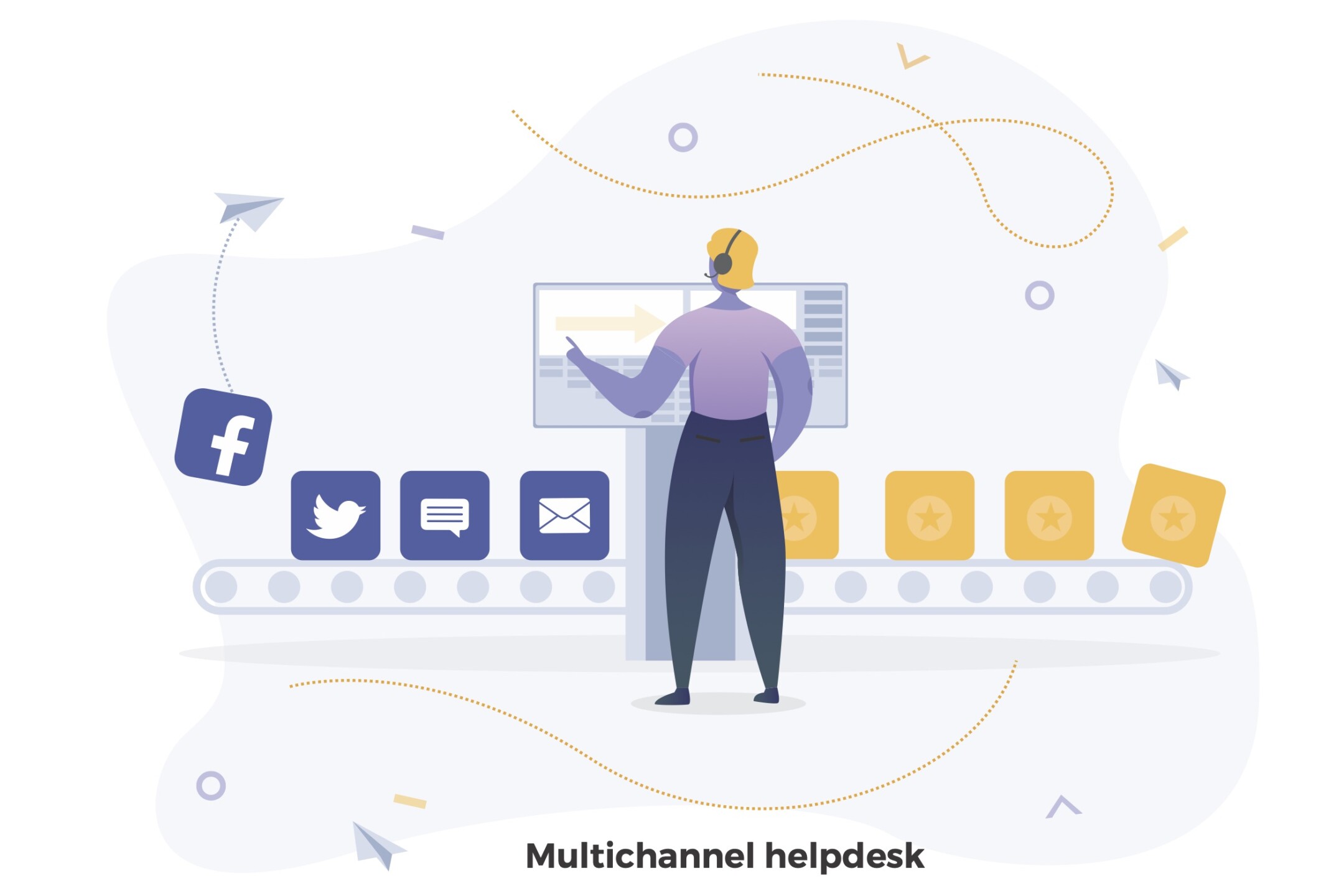That tweet got me thinking. The content placement makes sense to me: Plenty of business travelers see that sort of advertising. But do they act on it? That’s the million-dollar question.
It turns out, yes. Yes, they do. One survey found that 80% of executives said they’d consider a B2B company after seeing it in an airport.¹ Another study revealed that 60% of business and leisure travelers think airport ads represent high-quality brands.² There’s more. Sixty-two percent of business travelers with senior titles notice ads in airports more frequently than they do in other environments, and 60% even believe airports are the most effective place to market international B2B brands.³
Pretty incredible findings, even if we don’t know the exact ROI of these content campaigns. Airport ads are a stunning example of why content marketing is important for B2B brands. They also illustrate just how important it is to diversify content types. A quick glance at a terminal billboard might be more effective than another white paper or a Google search campaign.
It’s this sort of research-driven, outside-the-box thinking that should center your B2B content marketing strategy. We’re getting ahead of ourselves a bit, though. The wall-panel display you see while lugging your luggage across the moving sidewalk is the result of careful planning, target-audience research and strategic thinking that go into a B2B content strategy.
Let’s set up our own B2B business to explore how to build a strong content strategy and understand why content marketing is so important for B2B businesses.
Six steps for turning a B2B content strategy into business value
Step into the world of Thingamabob: the bespoke corporate swag company for Millennials and Gen-Zers. We just nabbed some sweet a16z funding that has Sand Hill Road all in a tizzy, and things are looking up! It’s a great market. Everyone needs stuff we all get (swag) these days. It’s almost a given that at a decently sized company, you’ll receive some sort of tchotchke (or even something useful) emblazoned with your company name and logo. We’ve got a great business model, which I have in a deck somewhere, etc., etc.
At Thingamabob, we also know the swag industry is getting crowded due to this expectation. We need to craft a content marketing campaign to let corporate America know that we are different and that we should be the go-to office swag producer for young, hot companies who have more job applicants than they know what to do with. How do we go about crafting a B2B content marketing plan? Let’s walk through it. Along the way, it’ll become clear just how important content marketing is to marketers that sell to other companies.
1. Identify business goals that your content strategy can help you achieve
This sounds obvious, but it’s not always apparent. It’s easy to throw content at the proverbial wall, hope it sticks and carry on after checking “B2B content marketing campaign” off your list. Unfortunately, if your campaign doesn’t help your organization reach a business goal (or goals), it’s effectively a waste of money.
Our broader goal is to help the company make money. Thingamabob doesn’t survive if no one buys our bespoke swag packages. But that’s a little too vague. We can narrow it down a bit based on who we are as a company. Since we’re a newer entrant to the market, have investors to please and need to scale, we’ll need to attract clients who want swag subscriptions, because subscriptions = recurring revenue.
This business goal is crystalizing. We need a B2B content marketing campaign that does two things:
- Builds brand awareness about Thingamabob
- Hones in on companies that will make recurring swag purchases
2. Find your target audience through research

Now that we’ve set our business goals, we need to dig deep into research. Who is our potential customer? Who is going to see this content and act on it? What are they like? Where do they spend their time when not in the office? How and where do they research swag-company partners? Writing down a list of questions like this can be a helpful way to start your target-audience research.
As you answer these questions, buyer personas and prospective client profiles will begin to emerge. Don’t be afraid to use resources that might not be top-of-mind for this sort of exercise. Places like Quora and even Reddit can be treasure troves of information because the folks who respond to questions usually do so from first-hand experience.
Take this forum, for example. Respondents let the poster know that folks responsible for purchasing swag are usually marketing, PR, or HR departments. Here’s a LinkedIn post that covers pain points swag procurers endure.
Now we’ve got a decent handle on the types of people Thingamabob will try to attract with its content marketing. They are typically:
- An HR person or generalist at a smaller company
- Someone from the marketing or PR department at a larger company
- Not so enthused about the time and effort it takes to manage the swag-procurement chain
Bingo. By answering just a few questions, we’ve built a pretty solid buyer persona. Now, when we craft our message and move into the finer points of content marketing outreach, we have a north star: a business objective and the type of buyer who will help us meet that objective. We’re starting to look like marketers, rather than throwing-stuff-against-the-wall marketers.
3. Create great content with strong messaging
Thingamabob is getting close putting out some great marketing content. We have our north star; now we can navigate messaging. As B2B content marketers, it’s our job to iterate and massage our verbiage to pique the interest of our target audience. This process will and should take a while. For this exercise, we’ll throw out a few quick ideas as examples.
In your role, you’ll want to meet with other marketing folks and people in other departments, like sales, for their input. Brainstorming is a helpful tool, and the more the merrier when it comes to developing content ideas and messaging.
At TEAM LEWIS, our creative team has a helpful process for creating content messaging. I don’t want to give away our special sauce but suffice it to say it involves asking more questions, breaking ideas down into smaller components and iterating over and over and over. Don’t be afraid to experiment with your own approaches.
Let’s try a few on for size:
For people in HR roles: “Your job is people, not things. Let Thingamabob handle swag so you don’t have to.”
For marketing and PR: “Time is money. Let Thingamabob handle your swag package and get you some money back.”
Basic, but you get the idea. Good marketing messaging meets your target audiences at their pain points and offers a solution.
4. Pick the right channels to reach your target audience

Channel selection is where you can start to get really creative. Remember that plenty of business executives start to make purchase decisions while looking for the closest frequent-flier lounge. It’s unlikely travel hubs are the ideal location for an HR manager at a smaller company or a non-CMO on the marketing team. Going after airport ad space would be a poor decision for Thingamabob.
But where do people in those roles spend a lot of time? LinkedIn. A content strategy heavily weighted toward LinkedIn ads and posts should effectively reach plenty of our target audience. Pitching guest posts on job boards like Indeed and Glassdoor is another way to increase visibility of our marketing content.
It goes without saying that we should create plenty of blog content and social media signal boosts on Thingamabob’s owned channels. Content marketing is about more than just selling a product. It should establish your company as a trusted industry expert, someone other companies can turn to when they’re not sure how to proceed.
5. Optimize your marketing content as your campaigns progress
I know the word “optimize” makes us marketers think of SEO optimization. And that’s certainly part of what we mean when we discuss optimizing content. Optimization also refers to more than SEO content writing services.
When we launch a content marketing campaign, we’ll leverage different copy choices, different creative designs and different channels. We’ll monitor each of our efforts (more on this later) to see how each piece of the campaign performs. If a blog post doesn’t get lots of pickup on social media but we see lots of engagement with social media posts, we can adjust how we promote content moving forward.
Marketers are natural experimenters, always tweaking and adjusting as they go along. B2B content is no different. We should feel free to evolve our campaigns to optimize for the results we’re looking for.
6. Measure content effectiveness carefully

I said we’d revisit the idea of monitoring our efforts later. It’s now later. If you remember way back up to the top of this post, we talked about how reaching business goals requires measurement. This step is how we bring everything all together. When we measure our content’s effectiveness, we understand just how important content marketing is for B2B companies like Thingamabob.
What are our content marketing goals? To build brand awareness and reach people who are likely to make recurring purchases on our platform.
How do we know if we’ve reached them? We tie our content marketing efforts to measurable goals. For example, let’s say we wrote a gated eBook about how to manage swag-buying, targeted toward HR professionals. We also probably wrote a blog post pointing back to the landing page for the eBook and promoted that blog post on social media and other owned channels.
If we set up goals on our website analytics platform, such as Google Analytics, we can see how many form fill-outs came from which channel, like Twitter, LinkedIn, YouTube, etc. Then we can see how many of those form fill-ins turned into leads and, eventually, customers. That tells us how our content marketing efforts led directly to new customers and revenue.
We can also measure more general metrics, like website traffic and keyword search volume. If more people are searching for Thingamabob or our website experienced a bump in traffic, we’ll know that the brand awareness-building campaign is working.
Marketers uncover the value of B2B content marketing with every step of the journey
The proof, as they say, is in the pudding when it comes to B2B content marketing strategies. If you build a thoughtful strategy and attendant campaigns with strong measuring tools, you’ll realize the value of content marketing at every step of the journey.
If you want to learn more about how our content-marketing experts can help you turn airport adverts into bottom line boons, contact us today and let’s talk.
¹Chief Marketer: 80% of executives will consider a company after seeing it in an airport
²Businesswire: 60% of travelers think airport ads represent high-quality brands
³JCDecaux: 62% with senior titles notice airport ads more frequently than in other environments and 60% believe airports are the most effective place to market international B2B brands



